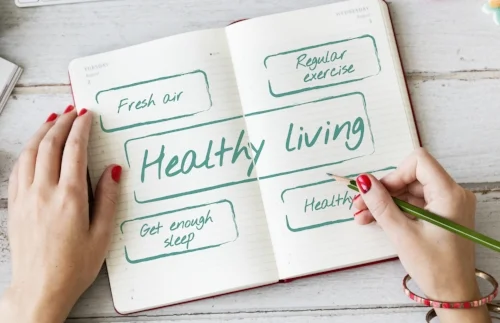Guest Post
Jackie Waters was diagnosed with rheumatoid arthritis in her mid-20s. She soon began making the lifestyle changes needed in order to minimize the number of medications she would need to take, and was kind enough to reach out to The Patient Advocate’s Chronicle to share her insight. She is a mother of four boys, and lives on a farm in Oregon. She is passionate about providing a healthy and happy home for her family, and aims to provide advice for others on how to do the same with her website Hyper-Tidy.com.
If you’ve recently been diagnosed with a condition that causes chronic pain, you might be envisioning a medicine cabinet filled with pricey prescriptions and a calendar packed with time-consuming doctors’ appointments. Regular check-ins with your medical team are important, but it’s also important to know there are some things you can do on your own to help minimize and manage your chronic pain -- and your reliance on medical interventions.
Facts and Misperceptions About Prescription Drugs
Although prescription drugs are an essential part of the arsenal in many people’s fight against chronic pain, it’s important to understand the risks that come with them. Some people perceive prescription drugs as inherently safe because they’ve been prescribed by a doctor. But drugs come with warnings about side effects for a reason, and their unintended effects can be even more pronounced if they aren’t used properly. People often begin abusing prescription drugs without even realizing they’ve done so. They start increasing the dosage themselves a little at a time, maybe one pill more once a week. Then twice a week, then once a day. Some increase their intake because they’ve developed a tolerance through repeated usage or because they’re struggling to cope with their chronic pain or other issues.
In fact, prescription drugs are among America’s most commonly abused substances, coming in behind only alcohol and marijuana. According to a 2014 report cited by the Substance Abuse and Mental Health Services Administration, 15 million Americans ages 12 and up had used prescription drugs non-medically in the past year. All too often, prescription drugs act as a gateway to illicit drugs, with 12.7% of newly reported illicit drug users starting first with prescription pain relievers. So it’s important to use prescriptions only as intended and not to rely on them as your only defense against chronic pain if there are other avenues open to you.
Diet and Exercise
Chronic pain is sometimes caused by inflammation, which is the body’s immune response to toxins it’s working to clean out. Over time, inflammation can also trigger conditions including heart disease, strokes, diabetes, Alzheimer’s disease, and even depression, according to information from the Cleveland Clinic.
Experts at that institution recommend adopting an anti-inflammatory diet to defend against chronic pain. Rather than focusing on certain superfoods, these eating plans recommend consuming eight or nine servings of vegetables -- perhaps substituting a couple of servings of fruit -- each day, eating dairy products in limited quantities, opting for whole grains over simple carbohydrates, and avoiding red meat on all but the most special occasions. As an example, a Mediterranean or vegan diet follows many of these guidelines.
Additionally, exercise can enhance the positive effects of an anti-inflammatory diet. An appropriate exercise regimen might include a daily walk or bike ride, and also helps control weight and alleviate stress. Medical professionals recommend maintaining an ideal weight you decide upon with your doctor, as well as actively managing stress levels.
The Importance of Pacing
Making some simple changes to your daily routine can also help keep chronic pain in check. Experts suggest starting by keeping a symptom diary to track your pain levels for a few weeks. Make notes about your activities and rate your pain level on a scale of 0 to 10. Then, look for patterns and make modifications where you can. For example, if extended periods sitting behind a desk aggravate your pain, request a standing desk at work or at least break up sitting sessions with activities that get you up and moving. For example, maybe you can stand, stretch, and stroll while taking calls. Even without chronic pain, doctors recommend walking five minutes for every hour you sit.
You can also use your pain record to time how long you can comfortably do activities before pain flares. For example, if standing in the same spot to do dishes puts you in pain after 15 minutes, break up dishwashing into shorter sessions rather than pushing through until the last glass is sparkling.
Controlling chronic pain takes a multi-faceted approach that may include medications and other conventional interventions. But implementing some of this advice can help make you an active and effective member of your own pain management team.

